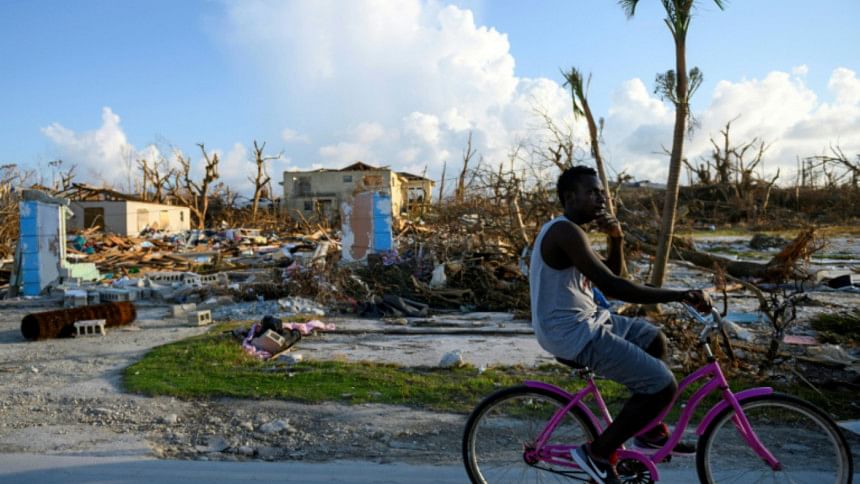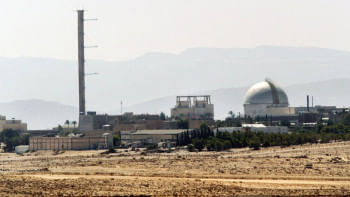Climate crisis: ‘Dorian’ brings home new urgencies

The devastation caused by Hurricane Dorian in the Bahamas over the last week or so has illustrated quite clearly that even though the Caribbean has a well-developed early warning system for hurricanes and is also a part of the Caribbean Catastrophe Risk Insurance Facility (CCRIF), that deals with the residual impacts of such hurricanes, it was not immune to the havoc wreaked by the Category 5 hurricane.
As of now, the confirmed death toll has crossed 50 and thousands still remain missing. Many thousands have had to be moved from the worst hit islands to other parts of the country.
At the same time, the scientific community has been able to quite quickly establish that the enhanced severity of Dorian, and particularly its remaining stationary over the Bahamas, could reasonably be attributed to the fact that the sea surface temperatures were higher than normal and this in turn could be attributed to human induced climate change.
This is indeed a tragedy that illustrates the phenomenon of loss and damage from human induced climate change that is now a reality and not just something to deal with in the future.
This issue is relevant for the upcoming negotiations in the 25th Conference of Parties (COP25) under the Framework Convention on Climate Change (UNFCCC) to be held in Santiago, Chile in December this year.
In COP19 held in Warsaw, Poland the UNFCCC created the Warsaw International Mechanism (WIM) on Loss and Damage, which then had an Executive Committee develop first a two-year work programme and then a five-year rolling work programme.
The five-year plan is now coming to an end and at COP25 parties will have to decide whether to continue with the WIM and if so, whether to change its mandate to cover more activities.
The original mandate for the WIM was to refine our understanding of what constitutes loss and damage due to climate change and differentiate rapid onset impacts, like hurricanes and floods, from slow onset impacts, like sea level rise. Also to differentiate between economic and non-economic loss and damage. It also did some excellent work on defining risks from different climatic impacts in different parts of the world.
One of its recent initiatives which was to set up a task force on potential forced displacement due to climate change with experts from different institutions and areas of expertise. This task force report was submitted to COP24 in Katowice, Poland last year and was very well received.
One of its mandates was also to explore possible sources of innovative finance to support victims who suffer from loss and damage from climate change. This aspect of their mandate has remained confined to insurance as the only tool which has been explored in pilot form around the world, including the CCRIF in the Caribbean. However, the experience with such insurance tools has shown them to be useful in some cases but quite inadequate in others, particularly in helping the poorest and most vulnerable communities who can least afford to pay the premium for such insurance.
This is where the example of Dorian becomes so critical as the Bahamas were well adapted to normal hurricanes and are part of a climate change insurance scheme but nevertheless, suffered severe loss and damage in terms of lives lost, homes destroyed and livelihoods lost for many thousands of citizens, many of whom will become permanently forcibly displaced. The insurance is extremely unlikely to help those most affected.
Thus going into COP25, the Least Developed Countries (LDCs) group together with the African and Small Island Developing States (SiDS) and Latin American countries are joining forces to argue for a renewed mandate for the WIM that enables it to quickly explore possible ways of seeking and deploying additional finance, beyond insurance, to support the most vulnerable countries and communities get support after they suffer loss and damage due to climate change.
One option would be for the WIM to have its own funding arm like the Clean Development Mechanism (CDM) and the Climate Technology Centre and Network (CTCN), which are also mechanisms set up under the UNFCCC. Another option would be to enable some of the existing financial mechanisms such as the Green Climate Fund (GCF) or Adaptation Fund to open a window for supporting the victims of climate change impacts.
A third possibility would be to set up a task force or expert group such as the one for climate migration which worked very well, and task it to come up with ways to raise and manage additional funds for loss and damage.
Such a task force could be mandated to explore both potential sources of funding as well as channels, for managing any additional funds that may become available. One of the options could include reviving the proposal by the LDC group for an International Air Passenger Adaptation Levy (IAPAL) and redirecting it for loss and damage. This proposal which consists of a USD 10 levy per international economy class ticket would raise between USD 5 and 10 billion a year.
The Chilean presidency of COP25 is well aware of the need to have a successful outcome on the review of the WIM in Santiago this December and this role could then be passed on to the incoming COP presidency from the UK for COP26 to be held in Glasgow, Scotland in December 2020.
A successful outcome on the WIM review will however require all parties to join with an open mind and accept the need to do more than what has been done so far. The greater global changing narrative of climate emergency has become more relevant now, as loss and damage from human induced climate change is what makes it an emergency.
The government of Bangladesh is also preparing to develop a two-year pilot programme to examine the feasibility of setting up a National Mechanism on Loss and Damage, which would allow the country to support the victims of climate change impacts in the future.
The writer is Director, International Centre for Climate Change and Development, Independent University, Bangladesh
Email: [email protected]

 For all latest news, follow The Daily Star's Google News channel.
For all latest news, follow The Daily Star's Google News channel. 



Comments